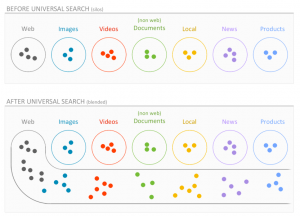There’s been a soft rumbling going on in the world of website design. You keep hearing the acronym “AMP.” In the past year, that rumbling has turned to a grumbling. And now it’s 2017, and it’s everywhere. But what is it? What does it have to do with your website? Why is it so important?
It stands for Accelerated Mobile Pages and if you haven’t gotten on the bandwagon yet, you better get on soon.
In order to get to 2017, we need to go back. Let’s start in the year 2015 when mobile search is becoming a Thing. More and more people are turning to their smartphones and tablets to find information. Google notices this trend; it also notices that mobile websites are either slow to load or aren’t displaying properly on phones. This is not good for business. So, it decides to do something about it and creates the Accelerated Mobile Pages Project. The purpose of the AMP Project is to present a web page to the user in the quickest manner possible. It relies on AMP HTML, which an open framework that uses current web technologies to allow websites to build a lightning fast web page.
Big companies soon hop on board the AMP train. Twitter, WordPress.com, and LinkedIn are among the first to use AMP HTML pages. News websites like the BBC, Mashable, and the Huffington Post, where content is more important than design, join in the game. And as mobile search begins to take over desktop search, AMP has become the wave of the future. It’s important to note that AMP is really for articles, not website pages. Though plans are in the works for an expansion beyond the blog.
Yeah, but what is it?
The goal of AMP is to give users the quickest, best mobile experience possible. And this may mean a sacrifice in design.
One of the reasons mobile sites slow down is the design. A lot of code can go into a website design. And when you add on plugins, photos, and pages, things start to slow down. There are ways to combat the slugginess (and, for SEO purposes, you really should) but a slow website can hurt your user experience. We’ve become a culture where when people want something, they want it now. They expect their web pages to be readily available as soon as they land on them. Not getting instant gratification could mean a loss of a potential customer. That’s not good for your business and it’s not good for Google. So AMP aims to give the user the best experience possible by presenting a simple page that has the content the user is looking for without too much sacrifice.
And you know where I’m going. Yes, AMP does affect SEO. Better user experience, faster website, better rankings. Currently, AMP is not a ranking factor for SEO. But that doesn’t mean it’s not going to happen down the line. Remember, once upon a time a mobile friendly website didn’t affect rankings either. Then Mobilegeddon happened and here we are.
So how can you get started with AMP? Well, if you use WordPress there’s a nifty little plugin you can use that will help do the work for you or else you just need to know some coding in which you might want to give us a call! Otherwise, take a trip over to the AMP Project website and learn the rules and regulations.
Digital & Social Articles on Business 2 Community(30)
Report Post





